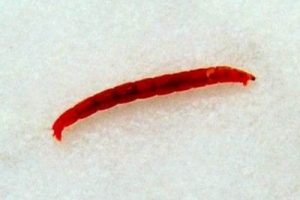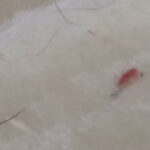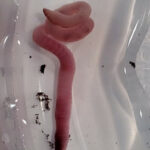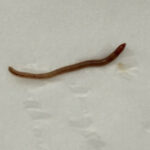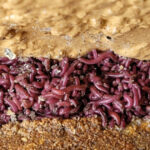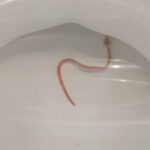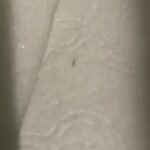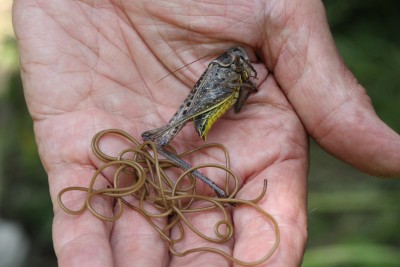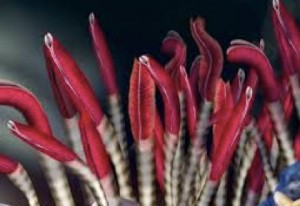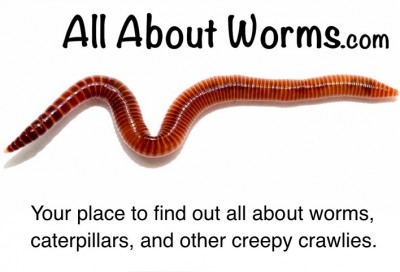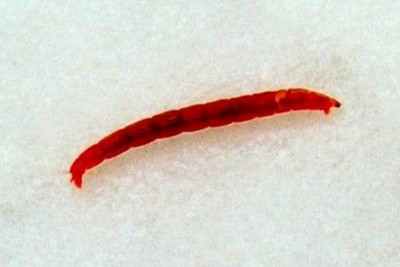
When someone says ‘bloodworm’, it may not bring up the most pleasant of images if you have never seen one of these critters before; the word itself is somewhat creepy! This article will detail the various worms that fall under this umbrella term, and why they are not nearly as terrifying as their name makes them out to be.
As we said previously, the term ‘bloodworm’ does not refer to any specific type of worm, but is an umbrella word used to describe worms that produce an excess amount of a hemoglobin-like molecule, which is the molecule in our red blood cells that carries oxygen and gives them their red color. Most species of bloodworms do this so that they can sustain in conditions where oxygen is at a low level. The species that the term ‘bloodworm’ refers to are: red midge fly larvae, glycera worms and tubificid worms.
First of all, red midge fly larvae are marine worms that scavenge for food at the bottom of freshwater bodies, such as ponds, lakes and streams. Usually they will just eat decomposing organic matter, but sometimes they have been known to prey on smaller invertebrates. These worms are very tiny (usually not even reaching an inch in length) and make great fish food for domestic fish given their high iron content, and they are a common purchase among fish owners and farmers. Midge fly larvae are thin, segmented, and have cylindrical, curving bodies. Their heads tend to be darker than the rest of their bodies which makes it easier to tell one end from the other. These worms commonly swim up people’s drains and end up in their toilet bowls, but they are nothing to worry about! Midge fly larvae are completely harmless, as they do not bite or possess venom, and are not parasitic.
Secondly, glycera worms, like midge fly larvae, are also marine worms and also make good fish food. However, the glycera worm is notably larger than the midge fly larva. As opposed to the short length of midge fly larvae, glycera worms can be as long as fourteen-inches long! They are classified as bristle worms and have a venomous bite. This makes sense, as bristle worms are typically associated with the possession of some kind of venom. Although this bite is not dangerous, per se, it can cause an allergic reaction akin to a bee sting. So, out of all the bloodworms, this would be the one you would want to avoid, and likewise, out of all the bloodworms, this is luckily the one you are least likely to find in your toilet! Finally, what sets glycera worms apart from midge fly larvae other than their length is that they are not red in color, but pink.
Thirdly, tubificid worms are likely the most feared out of all the bloodworms, at least on the internet. These critters have an array of names you can call them by, be it their scientific name, ‘tubifex tubifex’, or any of the other nicknames people have give them over time, such as ‘sewage worms’ and ‘sludge worms’. Like the other species of bloodworms, the tubificid is a marine worms, and like the midge fly larva, it feeds on decomposing organic matter. What sets these creatures apart is their tendency to congregate in pipelines. And by congregate, we mean stack themselves on top of each other until they are all wrapped up in a wreathing ball of worms. It is this image that has freaked out hundreds of people on the internet, some calling it the most disgusting thing they have ever seen. And although these worms have also been known to swim up people’s toilet, and people do find them unpleasant to look at, tubificid worms are completely and utterly harmless. Their presence in your toilet may just be an indicator that you are not cleaning your toilet often enough, or that there is a build up of organic matter in your pipes.
In conclusion, this has been a brief overview of the three types of bloodworms which are commonly discussed and why there really is no need to fear them. We hope that this article proves to be insightful and helpful for our readers, and that if any of you were to discover a bloodworm in the near future, you now know that you have nothing to worry about!
All About Worms is always free, always reader-supported. Your tips via CashApp, Venmo, or Paypal are appreciated! Receipts will come from ISIPP Publishing.
You might also find these guys interesting!

